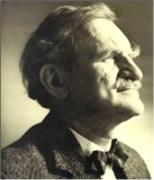|
|
||||||||||||||||||||||||
 |
Featured person
Recently added |
Dr William Haughton (1869 - 1951): |
||||||||||||||||||||||
William Steele Haughton was a medical practitioner who while his major specialty was orthopaedic surgery, was also noted for being one of the first of his profession to use the new X-ray technology following Wilhelm Conrad Röntgen’s discoveries in 1896, and to prove perhaps the most significant developer of radiology in Ireland (developer as opposed to introducer). It could well be argued that Haughton’s earlier career achievements were more significant in the eyes of the public.
Haughton was born in Dublin, fourth son (of six children) of Professor Samuel Haughton and his cousin Louisa Haughton. He was educated at the Abbey School, County Tipperary, and in Ulster, at Portora Royal School, Enniskillen, County Fermanagh. He proceeded to the University of Dublin, Trinity College, where he graduated BA in 1891 with a gold medal; MB in 1894 and later, MD in 1901. He had a postgraduate appointment as assistant surgeon to Edward Halloran Bennett at Sir Patrick Dun’s Hospital, Dublin; in 1899 he was appointed surgeon at Dr Steeven’s Hospital, Dublin, a post he held until 1948; he was consulting surgeon 1948-1951 and a Governor from 1917. From 1907 he was surgeon at the Orthopaedic Hospital of Ireland at Clontarf. During the First World War he saw service in the Royal Army Medical Corps with the rank of Major.
The impact of Röntgen’s discovery was as far-reaching as it was almost instantaneous.
Röntgen had been studying cathode rays in 1896 when late one afternoon, 8 November he noticed a mysterious glow emanating from an object in the darkened room. Over the following weeks he carefully studied this radiation until he was able to produce a radiograph of his wife’s hand with her wedding ring. He published a comprehensive article, “Eine Neue Art von Strahlung” (“A New Type of Rays”) detailing his findings, in the Proceedings of the Würzburg Physical Medical Society on 28 December 1895. Within only a few weeks his discovery had been widely reported internationally, first in Vienna on January 5, 1896, the following day in the London press and by mid-month in The Lancet and the British Medical Journal in London and the Freeman’s Journal in Dublin.
Many in the medical profession were quick to take interest in this “new photography” as it was described. The earliest attested clinical X-ray attested to have been produced in Ireland was in Ulster, by Dr CE Shaw, a Belfast doctor and Lecturer at Queen’s College, reported in The Lancet on 29 February. Professor WF Barrett produced the first clinical X-ray in Dublin on 16 March at the Royal College of Science. On 13 April, Michael Francis O’Reilly, Brother Potamian, the noted scientist and educationalist, became the first non-medical practitioner to produce a clinical X-ray in Ireland, at De La Salle College, Waterford, before an assembly of all medical practitioners in the town.
The same month, Haughton, who had already acquired equipment for an X-ray machine in London in March (it was common practice for doctors and others to take advantage of the ready availability of equipment and information, to furnish themselves with their own apparatus), wrote to the Governors of Sir Patrick Dun's recommending that they take steps to install an X-ray apparatus. This was soon carried out and for a time Haughton acted as radiologist as well as his position as assistant surgeon.
Professor of Radiology at Galway, James Murray, in an article on the origins of radiology in Ireland, wrote of Haughton that he “stood head and shoulders above all others in Ireland, with an expertise and experience which must have been unrivalled in the world at that time”, that is, the early twentieth century. He added:
Haughton was a clear and inspiring teacher and a careful, meticulous surgeon. His writings were scientific rather than anecdotal. A man of rugged good health and infectious good humour, he was an accomplished sailor, had a fine tenor voice ... and the gift of easy friendship.
| Born: | 26 September 1869 |
| Died: | 12 October 1951 |
| Richard Froggatt |
| Bibliography: Dr James C Carr: A Century of Medical Research (Dublin, The Anniversary Press, 1995); Dictionary of Irish Biography; Thomas Gillman Moorhead: A Short History of Sir Patrick Dun’s Hospital, (Dublin, 1942); Barry Kelly: A Century of Medical Radiation in Ireland (Dublin, The Anniversary Press, 1995); RSJ Clarke: A Directory of Ulster Doctors (Ulster Historical Foundation 2013) |


Home | Our Policies | Plaques | Browse | Search | Sponsors | Links | Help | Contact
Privacy & Disclaimer | Cookie Policy | Site Map | Website Design By K-Point
© 2024 Ulster History Circle









